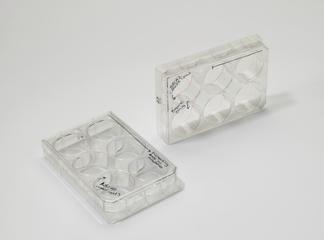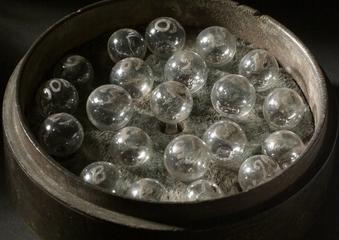
Crampons designed for 1953 Mount Everest expedition
- Made:
- 1952-3 in unknown place
Crampons of type used during the Mount Everest expedition of 1953, United Kingdom, 1952-3.
What does it take to climb Everest, the world’s tallest mountain? The route to the summit of Everest is steep with a mix of rocky terrain and snow and ice. Crampons are essential equipment in this environment. Just before the summit of Everest is one of the most difficult sections of climbing, which has become known as the Hillary Step. Edmund Hillary first climbed this imposing rock feature by finding a crack between the rock and the overhanging snow (cornice) that he was able to jam his way up, using his crampons for leverage. Tenzing Norgay belayed him for this climb and then Hillary was able to anchor the rope while Norgay climbed the step. Hillary described this climb: “I literally cramponed backwards up the crack, with a fervent prayer that the cornice would remain attached to the rock”.
By the 1950s, there had been several attempts to summit Everest and some climbers had got very close, but none had made it. The pioneering research of Dr Griffith Pugh was a key factor in the success of Edmund Hillary and Tenzing Norgay’s climb in 1953. Pugh’s background made him uniquely suited to this work. He was a practising doctor, but also a world class skier. He was selected to represent Great Britain in skiing at the 1936 Winter Olympics, but he was unable to attend due to injury. He also trained soldiers at the School of Mountain Warfare in Lebanon during the Second World War. It was here that Pugh began to research the impact of high altitude and extreme conditions on the body, leading to his work on Everest. Pugh took part in the expedition to Everest in 1953 and the preparatory expedition in the Himalayas in 1952, believing that laboratory research could not accurately recreate the experience of being in these extreme environments. His work established principles about acclimatising to altitude, food and water consumption during climbs, and oxygen usage that continued to be used by climbers for decades.
Details
- Category:
- Laboratory Medicine
- Object Number:
- 2017-59
- Materials:
- metal (unknown) and textile
- Measurements:
-
Individual crampon: 65 mm x 142 mm x 331 mm,
- type:
- crampons
- credit:
- Simon Pugh




